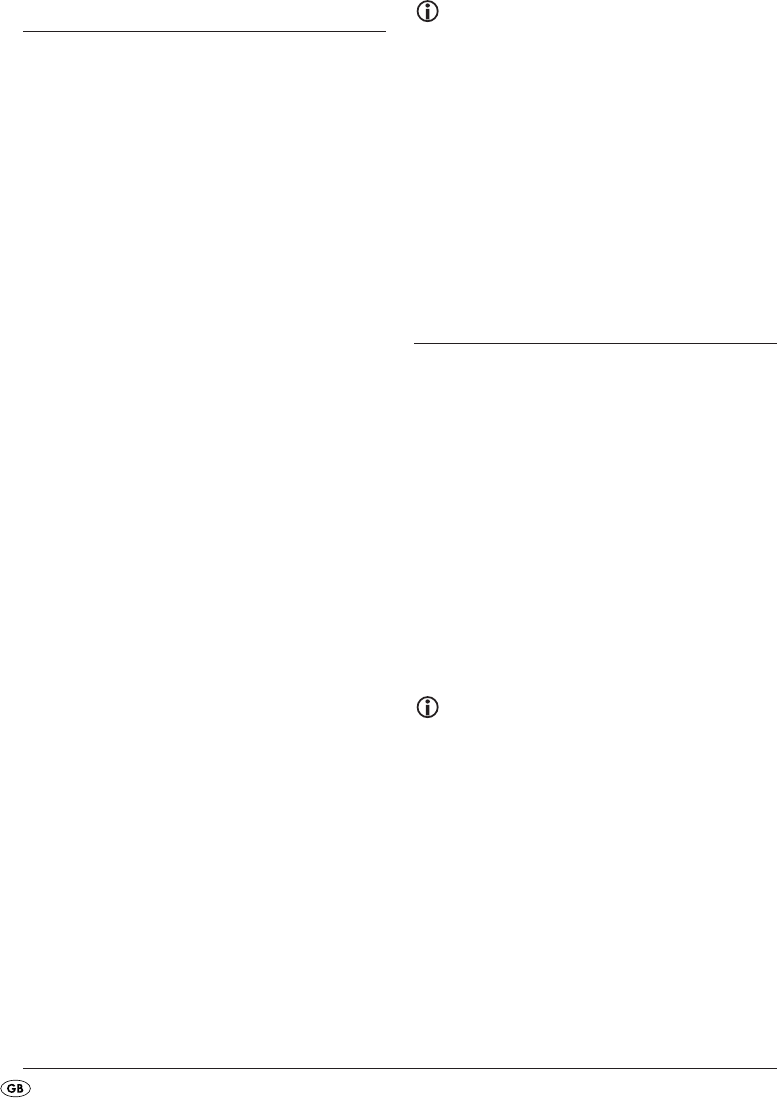
- 8 -
Defrosting
Ice forms on the inside surfaces of the appliance
through normal use. This is normal. How much ice
is formed, and how quickly, is dependent on the
ambient temperature, the humidity level and the fre-
quency of door opening. If this ice is too thick, the
cooling capacity and efficiency of the appliance
will deteriorate.
If the ice layer is thicker than 3 - 5 mm you need to
defrost the appliance. If possible, defrost the appli-
ance when it is almost empty.
1. Disconnect the appliance from the power supply
by removing the plug from the mains power socket.
2. Take the food out of the appliance, wrap it in
newspaper and put it all together in a cool place
or in a portable cooler box.
3. Leave the appliance with the door open until the
ice has melted.
ƽ
Appliance damage!
• Never use sharp-edged tools to separate the ice
from the housing.
• Do not use hot water or a hairdryer to accelerate
the melting rate. This could damage the material
of the interior walls.
4. Mop up the meltwater with a soft, dry cloth.
Clean the inside surfaces with a sponge and
some warm water and/or a neutral detergent.
ƽ
Appliance damage!
Never use aggressive, chemical or abrasive cleansers!
These could damage the surfaces.
5. Thoroughly dry the interior.
Note
Check the food to be refrozen to see if any of it has
started to thaw. Do not refreeze food that has started
to thaw, instead, consume it.
6. Place the food back into the freezer and close
the door.
7. Connect the appliance once again to the mains
power supply. Keep in mind that it will take some
time until it reaches the desired cooling tempera-
ture.
Cleaning and Care
ƽ
Danger of electrical shock
Before cleaning, ALWAYS remove the plug from the
mains power socket. If you do not, there is the great
risk of you receiving an electric shock!
ƽ
Risk of Injury!
There may be some sharp edges below the appliance,
please exercise care when cleaning it.
ƽ
Appliance damage!
Never use aggressive, chemical or abrasive cleansers!
These could damage the surfaces.
Note
After cleaning, always check the food to be refrozen
to see if any of it has started to thaw. Do not refreeze
food that has started to thaw. There is a risk that
bacteria can form in it.
IB_STG 85 A1_49364_LB3C 12.04.2010 13:10 Uhr Seite 8


















